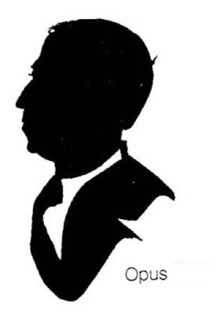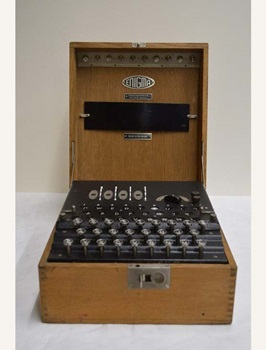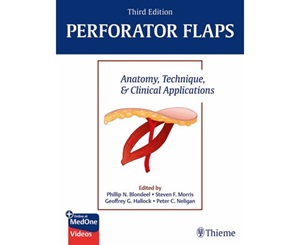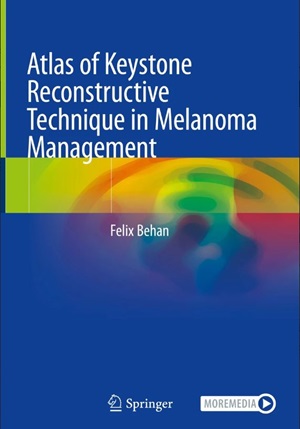2024 | Volume 25 | Issue 2
Author: Associate Professor Felix Behan, AM

OP – LXXXVI (86)
It was only after seeing the film ‘The Imitation Game’, with the focus on the Bletchley Park code breaking ‘enigma’, that I applied the same word to help explain the ‘enigma’ of the Keystone flap—hence the title—as science was beckoning.
The Keystone flap has broken many rules in plastic surgery inconceivably, such as closing under tension. But its success is dependent on the fascial base, designed within the dermatomal precincts, with its suprafascial and infrafascial vascular support1, tapping into embryological development, covering autonomic, somatic, vascular and lymphatic supply.
My US colleague, Geoffrey Hallock, saw my clinical presentation at the 17th Annual International Perforator Flaps conference in Sydney in 2016 and suggested I amplify the Keystone characteristics with the acronym P.A.C.E.S.—Pain free, Aesthetically matching with low vascular Complication rates and Economically expedient, with Sensory recovery and resolution of oedema. Even recently, a senior US plastic surgeon who helped Ian Taylor with the world first free flap reconstruction had a Keystone experience and was able to verify the above characteristics, as he said on his email to me.
The word ‘enigma’ also arises musically in Elgar’s ‘Enigma Variations’—musical pen pictures of his various musical associates, still confusing to everyone.

We cannot leave the word ‘enigma’ without mentioning Alan Turing’s part in deciphering the code, originating from the Polish mathematician Rejewski and assisted by a team of women mathematicians from Oxford and Cambridge universities. The words ‘Hail Hitler’ was the stroke of luck leading to the solution to break the code to win WWII.
This combination of variables led Steve Jobs and Steve Wozniak in creating their Apple computer. The speculation about the Apple logo with a bite is a reference to Turing’s demise by committing suicide, eating a cyanide laced apple after being charged with misconduct—a pearl thanks to Professor Wayne Morrison. Turing was posthumously exonerated by Queen Elizabeth II for his significant war contribution.
My clinical development of the Keystone has created many ‘lightbulb’ moments, all observational findings. The basic embryological guide of the design, based on the dermatomes, is why the flap works without using skeletonised perforators.
These observational developments over more than 30 years are the basis of the Keystone success to cover surgical defects from head to toe, to the bewilderment of many, creating this enigma.
Historically, Johann Karl Ernst Dieffenbach of the 1850s was the first to create a V-Y Pedicle Island Flap and when you join the opposite diagonal points of the Keystone arc, this could represent figuratively two conjoined V-Y flaps.
Jan F. Esser, another 19th century surgeon, did numerous island flap reconstructions and fortuitously the Keystone range seems to mimic many of these repairs on the face, quite coincidentally. In life, never forget, when you have a problem find a simple solution summarised by the words in Occam’s Razor of the 14th century.
So, in essence, I have been using V-Y island flaps all over the body without skeletonising perforators yet sitting on the shoulders of giants like Dieffenbach and Esser. My further readings has made me aware of their significant contributions.
Musically, Miki Pohl a plastic surgeon and founder of The Australian Doctor’s Orchestra, could explain why Joseph Haydn became such an eminent composer at the Esterházy Palace in Austria. He was untainted by the musical developments of the hierarchy from Mozart to Salieri and Hummel who performed at the big concert halls of Europe. Haydn went in his own direction creating 104 symphonies, 50 concertos, and pioneering 84 string quartets (maybe I should follow this pattern and let Opus 104 be my final goal). He did not have big brother sitting over his shoulder questioning what he was doing, which I avoided at the Western Hospital in Melbourne.
Melbourne has become the microsurgical mecca where Drs Rollin Daniels and Ian Taylor did the first microsurgical free flap repair with subsequent publication. My independence at the West allowed me to develop laterally, helping to establish the Keystone concept at both Peter MacCallum Cancer Institute and the Western Hospital.
I once closed a large buttock defect with a double V-Y flap, which resembled an arc flap for a pressure area on the lumbosacral region. Dr Tim Bennett, my then registrar, presented this at the RACS registrars meeting in Adelaide after Alan Briedhal saw the repair and suggested I change the name from an arc flap to a ‘Keystone’ architecturally of similar design.
Every major architectural arch around the world from the Coliseum to the Arc de Triomphe uses this wedge brick concept (keystone) to avoid collapse.
This Keystone principle has become universally accepted from New York to Macedonia and included in textbooks from Blondeel’s book on Perforator Flaps, thanks to Geoffrey Hallock, and to Springers book on the Keystone in Melanoma Management.


References:
1. Rodriguez-Unda N., Abraham J., Saint-Cyr M. Keystone and Perforator Flaps in Reconstruction. Clinics in Plastic Surgery, 2020-10-01, Volume 47, Issue 4, Pages 635-648, Elsevier